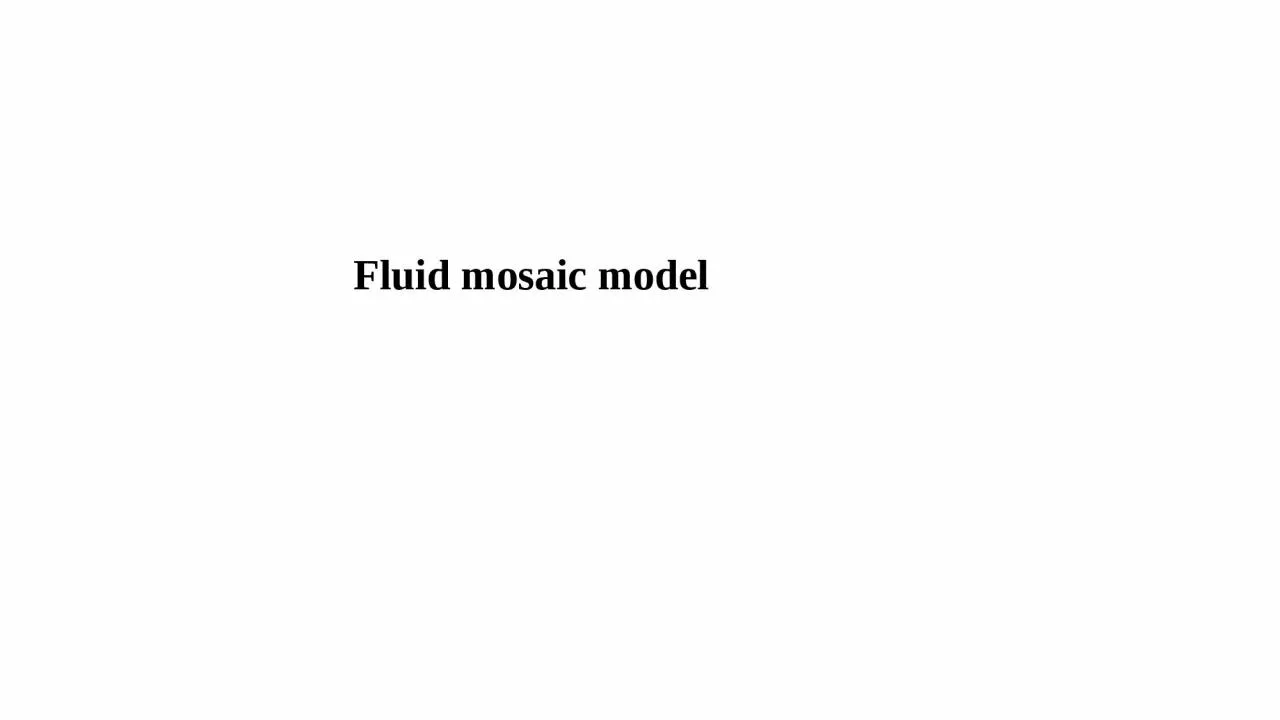

SJ Singer and Garth L Nicolson proposed the fluid mosaic model which is widely used The fluid mosaic model of the plasma membrane structure describes the plasma membrane as a fluid combination of phospholipids cholesterol proteins and carbohydrates ID: 1042349
Download Presentation The PPT/PDF document "Fluid mosaic model Plasma membrane" is the property of its rightful owner. Permission is granted to download and print the materials on this web site for personal, non-commercial use only, and to display it on your personal computer provided you do not modify the materials and that you retain all copyright notices contained in the materials. By downloading content from our website, you accept the terms of this agreement.
1. Fluid mosaic model
2. Plasma membraneS.J. Singer and Garth L. Nicolson proposed the fluid mosaic model , which is widely used.The fluid mosaic model of the plasma membrane structure describes the plasma membrane as a fluid combination of phospholipids, cholesterol, proteins, and carbohydrates.
3. The fluid mosaic model was proposed by S.J. Singer and Garth L. Nicolson. This model explains the structure of the plasma membrane of animal cells as a mosaic of components such as phospholipids, proteins, cholesterol, and carbohydrates. These components give a fluid character to the membranesThe fundamental building blocks of all cell membranes are phospholipids.Amphipathic molecules, two hydrophobic fatty acid chains linked to a phosphate-containing hydrophilic head groupphospholipid bilayers form a stable barrier between two aqueous compartments and represent the basic structure of all biological membranes.
4. Saturated and Unsaturated Fatty AcidsFatty acids make up the phospholipid tails. Saturated fatty acid chains have a single bond between the carbon atoms whereas, unsaturated fatty acid chains have double bonds between the carbon atoms.Double bonds make it harder for the chain to pack tightly by creating kinks. These kinks increase the fluidity of the membrane.Also Read: LipidsRestriction to Fluidity of Plasma MembraneLipid RaftsThese are the lipid domains found on the external leaflet of the plasma membrane. Cholesterol, glycosphingolipids, glycosylphosphatidylinositol are the building blocks of lipid rafts.Protein ComplexesProteins and glycoproteins are diffused within the plasma membrane. These help in the transport of ions and metabolites, cell signalling, adhesion, and migration.Key Points on Fluid Mosaic ModelThe plasma membrane comprises amphiphilic, phospholipid molecules.The second important component of the plasma membrane is integral proteins that are integrated completely into the membrane.Carbohydrates are found on the external surface of the membrane where they are bound to proteins or lipids.
5. PhospholipidsPhospholipids are amphipathic molecules with a hydrophilic head and a hydrophobic tail. These are attached to a glycerol molecule by a covalent bond.CholesterolIt helps the plasma membrane to retain the fluidity. It is present between the phospholipids and prevents the compaction of hydrophilic tails at low temperatures and their expansion at high temperatures.ProteinsThe plasma membrane has three types of proteins:Integral Proteins: These proteins form channels to allow the movement of large molecules and ions across the hydrophobic layer of the membrane.Peripheral Proteins: These are found embedded in a single leaflet of the membrane. They carry signals from one segment of the membrane and relay it to the another.Glycoproteins: They stabilize the membrane and are responsible for intercellular communication.Factors Affecting Fluidity of Plasma MembraneThe fluidity of the cell membrane is influenced by three factors:TemperaturePhospholipids are found close together when it is cold. When it’s hot, they move apart.CholesterolThe cholesterol molecules are randomly distributed along the phospholipid bilayer and hold it preventing it from separating too far, or compact too tightly.
6. The fluidity of the plasma membrane is affected by:Length of the fatty acid tailTemperatureCholesterolDegree of saturation of fatty acid tails